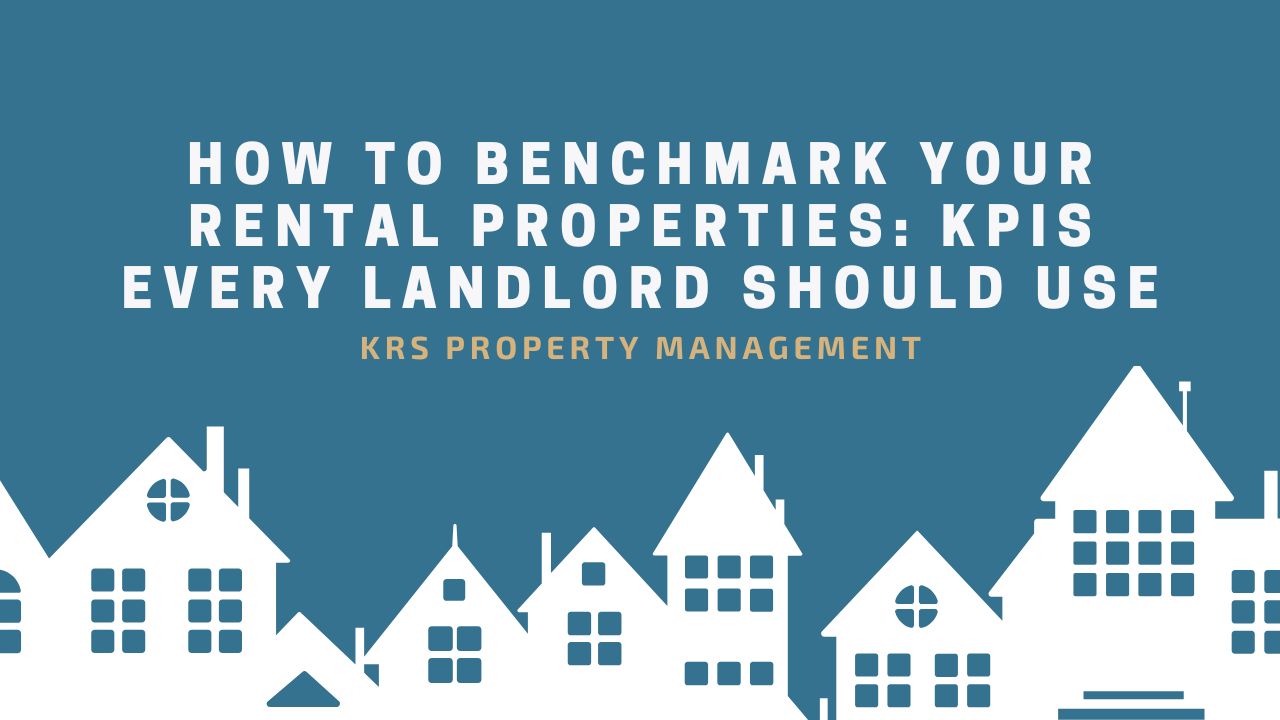
Key Takeaways
Benchmarking Drives Smarter Decisions: Comparing your property’s performance to goals and industry standards helps landlords identify inefficiencies, improve operations, and increase profitability.
Track KPIs for Financial & Operational Insight: Monitoring key performance indicators like NOI, cash-on-cash return, occupancy rate, and tenant turnover provides a clear picture of rental performance and areas for improvement.
Data-Driven Management Builds Long-Term Success: Consistently reviewing benchmarking results supports strategic planning, boosts investor confidence, and ensures your rental portfolio stays competitive and profitable over time.
Gone are the days when landlords relied on occasional observations or gut instinct to judge how well their rental properties were performing. While rental property ownership is often seen as a passive investment, successful landlords know that effective management is driven by data, not guesswork.
Benchmarking is comparing your property’s performance against set goals or industry standards that will help reveal inefficiencies, highlight strengths, and guide smarter decisions that boost profitability.
By tracking key performance indicators (KPIs), landlords can replace unreliable assumptions with a proven, analytical approach to managing their rentals.
In this article from KRS Holdings, we will explain what benchmarking involves, the benefits in property management, and the most essential KPIs for assessing the success of rental properties.
The Importance of Benchmarking in Property Management
Benchmarking offers a systematic structure for evaluating the performance of rental properties. It allows rental property owners to compare their properties against past performances and peer portfolios or industry standards.
The key benefits of benchmarking include:
Informed Decision Making: When landlords track objective data, they can identify assets that are underperforming and determine if they should change management strategies, invest in upgrades, or adjust rents.
Improved Financial Performance: Landlords can use regular KPI analysis to uncover inefficiencies such as frequent turnover of renters or high cost of maintenance.
Goal Setting and Progress Tracking: Benchmarking helps establish measurable goals that help ensure continuous improvements in the long run.
Lender and Investor Confidence: Landlords who seek partnerships or financing can use documented performance metrics to show financial performance, operational control, and professionalism.

By consistently reviewing and benchmarking key performance indicators, rental property owners can stay competitive, maximize returns, and build long-term investment success.
How to Establish a Benchmarking Framework
Before you identify specific KPIs, creating a clear benchmarking structure is necessary. Doing this will create the foundation for strategic, measurable, and consistent property management.
Below are the Necessary Steps:
Define Objectives: There should be a purpose for every benchmarking effort. Part of the objectives can be reducing expenses, increasing returns on investment (ROI), maximizing occupancy, or improving cash flow.
Select Comparable Metrics: Only use benchmarks relevant to the market conditions, location, and property type.
Collect Reliable Data: The accuracy of benchmarking depends on the source of data. You can use local real estate databases, property management software, industry reports, or internal property records.
Analyze and Adjust: After collecting the data, analyze the performance according to the benchmarks established and institute corrective measures where necessary. Minor issues will not progress to significant financial problems if you ensure continuous monitoring.
Financial KPIs to Measure Rental Property Profitability
Financial performance is among the foundations of benchmarking rental properties.
Some financial KPIs include:
Gross Rental Yield: This is calculated as (Annual Rent ÷ Property Value) x 100. It provides a quick snapshot of the property’s ability to efficiently generate income according to its value.
Net Operating Income (NOI): Before accounting for financing costs, NOI measures profitability. This provides the operational performance that landlords can use to compare properties with different financing options. The formula for NOI is Total Rental Income – Operating Expenses

Cash-On-Cash Return: This KPI assesses the actual returns from the cash invested. It is calculated as (annual cash flow ÷ total cash invested) x 100.
Operating Expense Ratio (OER): This is calculated as (Operating expenses ÷ Gross income) x 100. When the OER is low, it means there is a greater operational efficiency. But if it is high, there is inefficiency or excessive spending that may require maintenance or management review.
Capitalization Rate: Cap rate is the return expected from the property based on its current income. It is calculated as (NOI ÷ Property Value) x 100. Landlords use it to compare investment performance across markets and properties.
Operational KPIs to Evaluate Property Management Efficiency
Does the landlord’s management approach support steady profitability? Operational KPIs will provide this answer.
Some operational KPIs to consider are:
Occupancy Rate: This is calculated as (the number of occupied units ÷ total units) x 100. A high occupancy rate means that there is effective property management and strong demand.
Tenant Turnover Rate: The formula for this is (number of move-outs ÷ total units) x 100. If the turnover rate is low, it means there is operational stability and tenant satisfaction. However, a high tenant turnover leads to additional marketing expenses, higher maintenance costs, and lost rent.

Average Days to Lease: This operational KPI tracks the duration it takes to fill a vacant unit. When leasing periods are shorter, that signifies responsiveness to market conditions and efficient marketing.
Maintenance Response Time: Tenants are satisfied when there is quick and effective maintenance. Landlords can assess management efficiency by tracking the average time from when tenants submit requests to resolution.
Expenses Per Unit: This is calculated as total annual operating expenses ÷ number of units. Expenses per unit allow landlords who own numerous properties to compare efficiencies across assets.
Bottom Line
The success of modern property management isn’t measured by how many properties you own, it’s measured by how well those properties perform. By benchmarking clearly defined KPIs, landlords can turn raw data into meaningful insights and close the gap between potential and profit.
As you track your metrics, compare your results to industry benchmarks at both the national and regional level.
Markets vary, and understanding where you stand helps you make smarter decisions. Most importantly, don’t just collect numbers, we analyze them and take action to improve performance where needed.
If you want expert support using KPIs to maximize rental income, reduce vacancies, and strengthen long-term returns, KRS Holdings is here to help.
Our team specializes in data-driven property management that helps landlords reach their investment goals with confidence. Contact us today and let us help you achieve better results for your rental portfolio.






